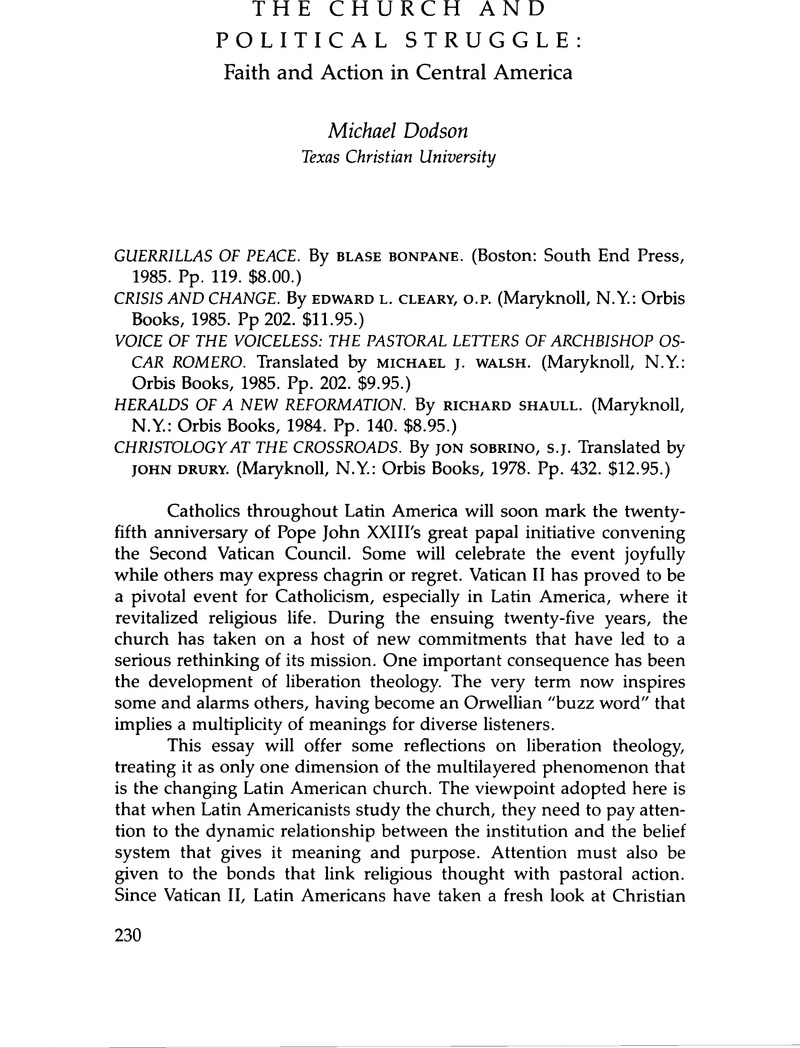Published online by Cambridge University Press: 12 October 2022

1. This point is especially well developed and illustrated in Phillip Berryman, The Religious Roots of Rebellion (Maryknoll, N.Y.: Orbis Books, 1984). I share the high opinion of this book expressed by Daniel Levine in an earlier review essay. See “Religion and Politics: Drawing Lines, Understanding Change,' LARR 20, no. 1 (1985):185–201.
2. Two informative accounts of CEBs in Central America that highlight the experience of El Salvador are Phillip Berryman, “El Salvador: From Evangelization to Insurrection” in Religion and Political Conflict in Latin America, edited by Daniel H. Levine (Chapel Hill: University of North Carolina Press, 1986), 58–78; and T. S. Montgomery, Revolution in El Salvador (Boulder, Colo.: Westview Press, 1982).
3. Two stimulating examples of North American commentary on liberation theology are Robert McAfee Brown, Theology in a New Key (Philadelphia: Westminster Press, 1978); and Brian Smith and T. H. Sanks, “Liberation Ecclesiology: Praxis, Theory, Praxis,” Theological Studies 38, no. 1 (March 1977):3–38.
4. See Romans 13:1: “Everyone must obey the state authorities; for no authority exists without God's permission. …”
5. These themes have cropped up prominently in recent works of liberation theology. For example, see Hugo Assman, Theology for a Nomad Church, translated by Paul Burns (Maryknoll, N.Y.: Orbis Books, 1976); Enrique Dussel, History and the Theology of Liberation, translated by Paul Burns (Maryknoll, N.Y.: Orbis Books, 1976); and Elsa Tamez, The Bible of the Oppressed (Maryknoll, N.Y.: Orbis Books, 1984).